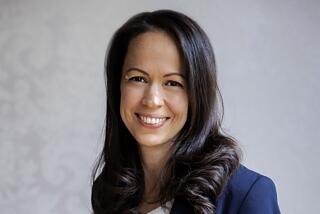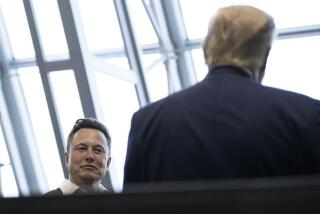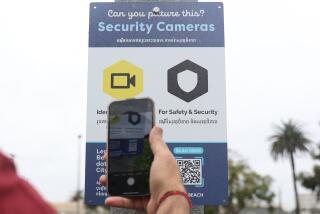Defining Big Data in a big book (and an app)
By now you’ve probably seen a reference to “Big Data,” especially if you’re interested in technology, marketing trends or the mechanics of political campaigns. It’s such a hot topic, it’s even found its way into newspaper editorials.
As the volume of coverage implies, there’s something important going on here, perhaps even transformational. The enormous amount of information being generated and collected daily by websites, smartphones and a global array of sensors has the potential to change how products are developed and sold, how services are delivered, how children are educated -- the list goes on and on. But what does “Big Data” actually mean, and how do the calculations of data scientists translate into something that matters to the average person?
Those were the questions that Rick Smolan, the photographer behind the “Day in the Life” book series and “America 24/7,” set out to answer in his latest project. The $50 coffee table book “The Human Face of Big Data,” which was released Tuesday, provides an explanation in the form of dozens of anecdotes about data collection and analysis, from a 17th century compendium of death reports that charted the rise and fall of the bubonic plague to a 2011 study of weather and GPS data that explained why you can’t seem to find a taxi in the rain in Singapore. The anecdotes are organized around 10 essays on the implications of the Big Data phenomenon, both encouraging and alarming.
Not every anecdote is technically a story about Big Data, which typically refers to the effort to glean insights from the massive amounts of raw information emanating from interconnected devices (the emerging “Internet of things”). Some are simply reflections of the enormous amount of data that we generate or are bombarded with as individuals. Nevertheless, the book is fascinating -- as well as exciting and scary in equal measures.
The physical format of “The Human Face of Big Data” carries a hint of irony: According to the British newspaper the Independent, coffee table books may be the last redoubt for book publishers against the digital revolution. In a bid to attract a wider audience, though, Smolan and his partner at Against All Odds Productions, Jennifer Erwitt, are offering a version of the book in the form of an iPad app.
“Probably about 40% of the book is in the app,” Smolan said, including all 10 of the provocative essays and more than 50 of its illustrative anecdotes. One example is a piece about ingestible sensors made by Proteus Digital Health of Redwood City, Calif., that measure and track a person’s heart rate, breathing, sleep patterns and other data about body functions. That information is combined by the sensor with data about the prescription drugs being taken, which Proteus can integrate with information from other sensors about such things as blood pressure and glucose level. The result: the ability to remotely monitor a patient at home “at a level of sophistication until now found only in hospital intensive-care wards.”
The app is a visual feast, and its interactive layout lets readers decide whether to dive deeply into a topic or skim through the highlights. Smolan said the proceeds from the app, which sells for $2.99, will be donated to Charity: Water.
The app offers a richer experience than the book because of the links it provides to videos streamed from the Web. But the book offers a workaround; after downloading a free viewer app onto their smartphones, readers can summon streaming videos just by pointing the phone’s camera at specially marked pictures in the tome.
In a recent interview, Smolan said his thinking about Big Data was strongly influenced by a conversation he had last year with Marissa Mayer, then a top Google executive and now CEO of Yahoo.
Mayer told him that the world was developing a “nervous system” that was going to be bigger than the Internet. It consisted not only of countless servers pumping information out across cyberspace, but also billions of people putting data into the system with their smartphones, as well as all manner of machines on Earth and in space collecting and sharing data about the world around them.
We’re still in the infancy of the Big Data era, but its potential is already apparent. To Smolan, the Internet was just the opening act of the transformation powered by digital technologies. “The Internet needed to be in place before all these devices could communicate with each other,” he said. “I actually thing that Big Data is going to be even more powerful in terms of the change it’s going to bring about.”
Not that it’s all a good thing. Smolan pointed to the tale of Hugo Campos (included in the book and the app), who wanted to use the data gathered by the defibrillator implanted in his chest for his own health-monitoring efforts. But the company that made the device -- Medtronic -- has refused to share it directly with him, sending it only to his doctor.
Campos’ story speaks to the larger issue of who owns the data that we generate, and what rules apply to how the information is used. The correlations made possible by Big Data can take us to uncomfortable places -- for example, Smolan said, some financial companies supposedly have found a link between rap-music listeners and bad credit risks. Does that mean lenders can check loan applicants’ Facebook time lines to identify lovers of rap, who then are charged higher interest rates? “There’s no laws applying to any of this,” Smolan said, adding, “It seems like we ought to be talking about this, at least.”
ALSO:
Santa Monica nativity display moving to private property
Women missing from Egypt’s new constitution -- and our old one
Follow Jon Healey on Twitter @jcahealey
More to Read
A cure for the common opinion
Get thought-provoking perspectives with our weekly newsletter.
You may occasionally receive promotional content from the Los Angeles Times.











